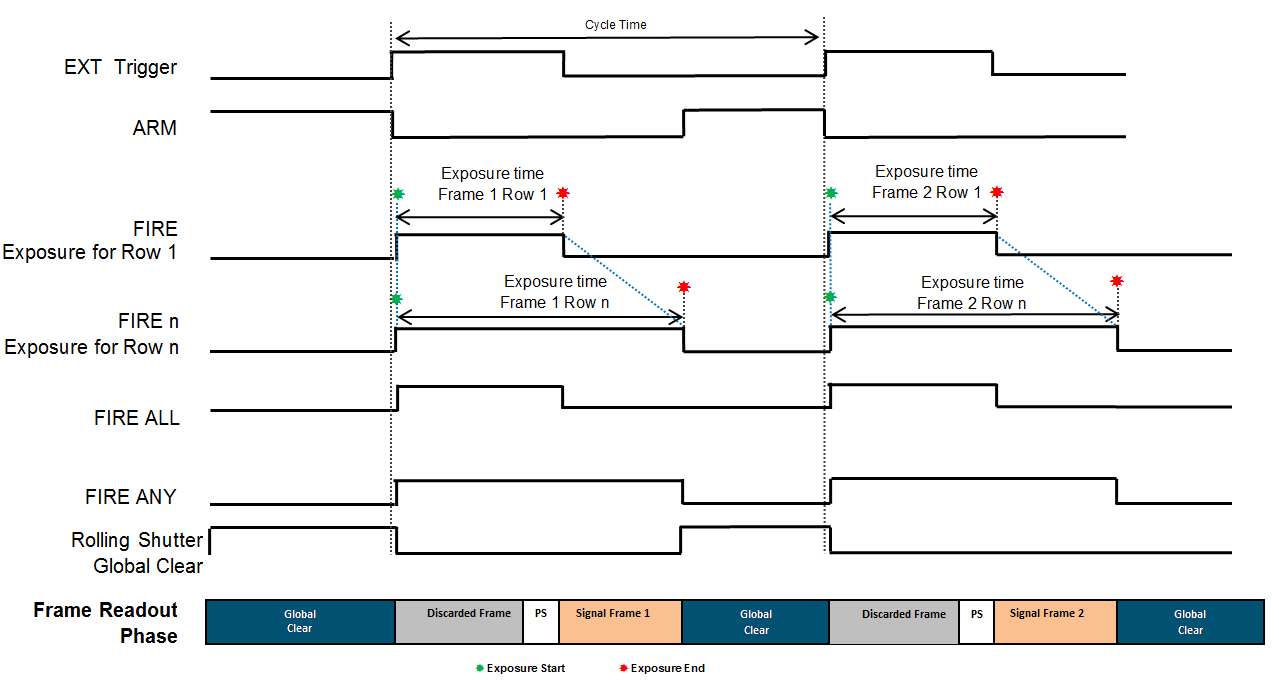Rolling Shutter Global Clear External Exposure Triggering (Non-Overlap Mode)
Available for Zyla 4.2 only. While waiting on the trigger event, the sensor is held in a Global Clear State which ensures that charge build up on the sensor is kept to a minimum while waiting for the trigger event. The ARM signal is asserted to indicate it is ready to detect an incoming trigger input.
Once the external trigger input goes HIGH, Global Clear goes LOW and the exposure begins. When the external trigger input goes LOW, a signal frame read out phase begins. When the frame has been read out completely, the Global Clear is held HIGH until the next trigger event is detected.
The external trigger pulse width defines the exposure time for Row 1, and is coincident with the exposure time for Row 1. The end of exposure for Row 2 will be delayed by one row time relative to Row 1, Row 3 will be delayed by one row relative to Row 2 and so forth for the remaining rows, hence the exposure time for each row is different as all rows have the same exposure start point in time but different exposure end times.
The period of the external trigger pulse defines the overall cycle time. If the width of the trigger event is less than the frame read out time, the falling edge will be missed and a subsequent falling edge will be required to end the exposure.

Rolling Shutter Global Clear External Exposure Triggering (Non-Overlap Mode)
Rolling Shutter External Exposure Triggering (Non Overlap Mode) Timing Parameters
| Parameter | Minimum | Maximum |
|---|---|---|
| Exposure* | 1 Frame + 1 Row | 30 s |
| Cycle Time (1/Frame Rate) | Exposure + 1 Frame + 5 Rows | - |
| External Start Delay | 0 | 1 Row |
| EXT Trig Pulse Width | 1 Frame + 1 Row | 30 s |
| *The exposure time reported is the exposure time for ROW 1 and the period for which FIRE ALL is HIGH. | ||